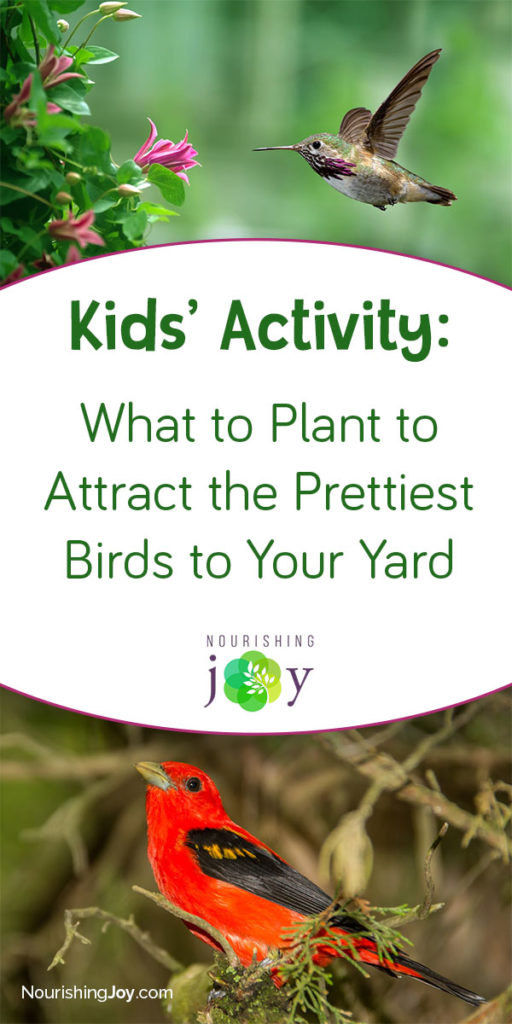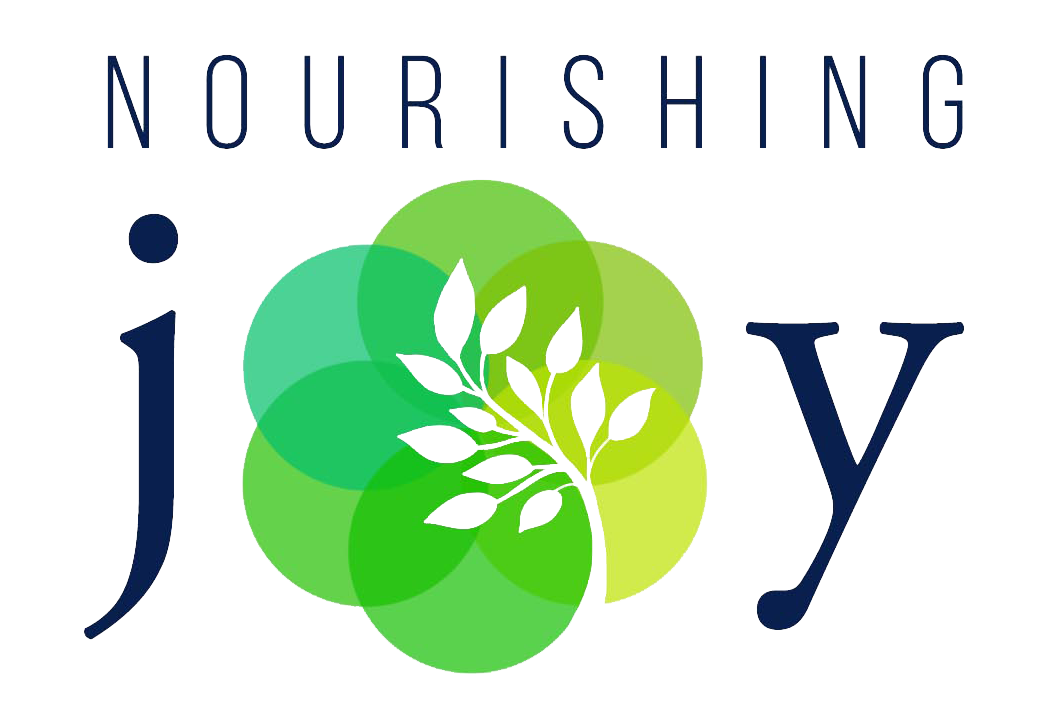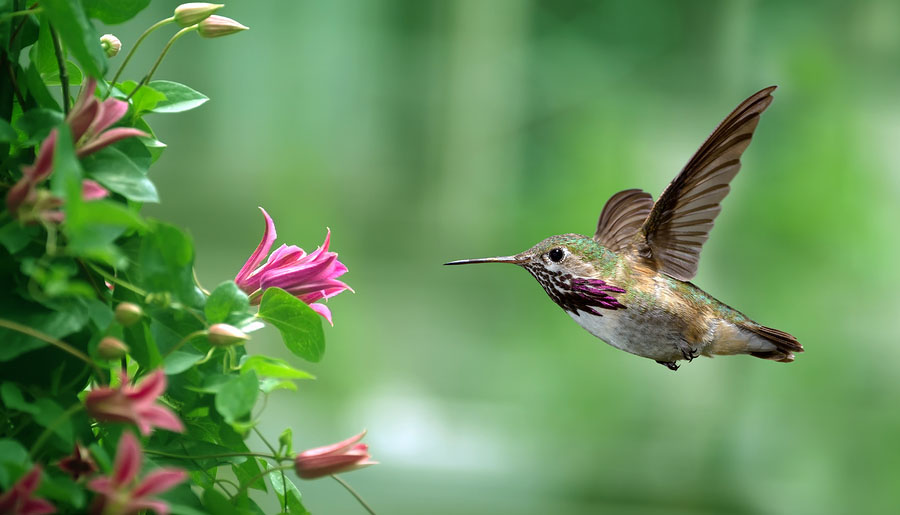What to plant in your garden to attract the prettiest birds
This post may contain affiliate links, including those from Amazon.com, which means we earn a small commission off your purchases. And here's the thing: We only mention services and products that we think are truly worth your attention, whether they're free, paid, or otherwise. This site relies on YOUR trust, so if we don't stand behind a product 110%, it's not mentioned. Period.



This year in our homeschool, one of our favorite subjects of study has been flying creatures: namely, insects, bats, and – of course – birds. After my husband put up the metal deer fencing, the deer stopped eating all the berries/bird food we put out for birds in the garden – and the population of all kinds of flying beauties exploded when we did so!
Our kids have absolutely LOVED pouring over birding books to identify birds in our yard and have spent hours pressing the buttons on this backyard bird book that allows you to hear the birdsong of each bird represented in the book. (SO, SO well done!)
And as my husband has taught our kids how to identify each of the hummingbirds that visit our feeder by watching their behavior and observing their markings, one thing they have noticed is that different birds are attracted to different flowers and trees.
What's particularly interesting, however, is that you can be proactive and attract particular birds by planting the plants those birds like.
And even MORE interesting is noting that some bird species are dying out because the plants that support their life have been increasingly cleared in order to make way for urbanization and other human development, so the act of replanting these plants has a much more profound effect than simply attracting beautiful birds to your yard!
So you can imagine my extreme excitement when I discovered that the Audubon Society has created a FANTABULOUS tool for figuring out what to plant exactly where you live to attract particular birds – and by so doing, helping to protect and celebrate those bird species.
Nestled in The Audubon Society website is a database of native birds, plants, and geographic data. Type in your zip code and — voilà! — you get a list of beautiful, native, non-invasive plants you can add to your windowsill, rooftop, or garden that will help support local bird (and bee) populations.
For example, let's say you were in zip code 10001, right in the heart of New York City. Do you have a roof planter? Orioles love butterfly milkweed.
Or how about in Alaska? A windowsill full of bluebell-of-Scotland will attract hummingbirds, even all the way up to Juneau.
Although if you're in warmer climes, such as San Diego, hummingbirds love the gorgeous flowers of the California Figwort.
If you want more help or want to know where to find seeds, the Audubon database can also point you to your local Audubon chapter, where you can get more detailed advice about plant and bird care.
Here's how families can work on this project together:
- Research what native plants to plant in your yard or planter box
- Plant the seeds or seedlings together
- Care for your plants
- Observe which birds visit your yard – take notes, make use of bird birds, and talk about what you observe (for example, in our yard, there's one hummingbird who fans out and waggles her tail feathers when she hovers, while none of the others do that).
So, make this an activity with your kids! It's a project where kids and adults alike can learn something new and share the joy of discovery for years to come.
This is also great for protecting and preserving healthy bee populations, but that's another post….




